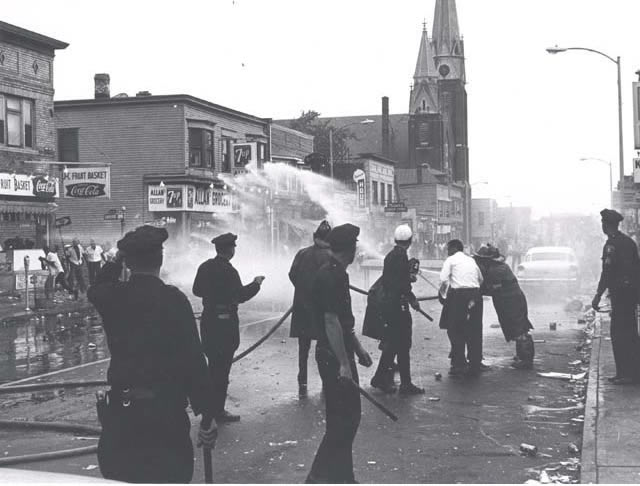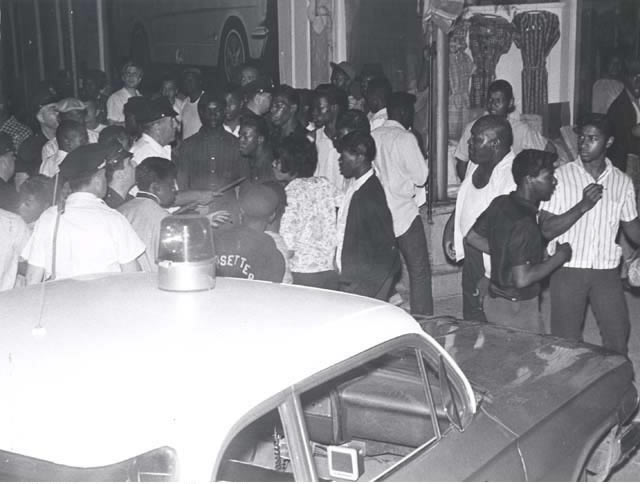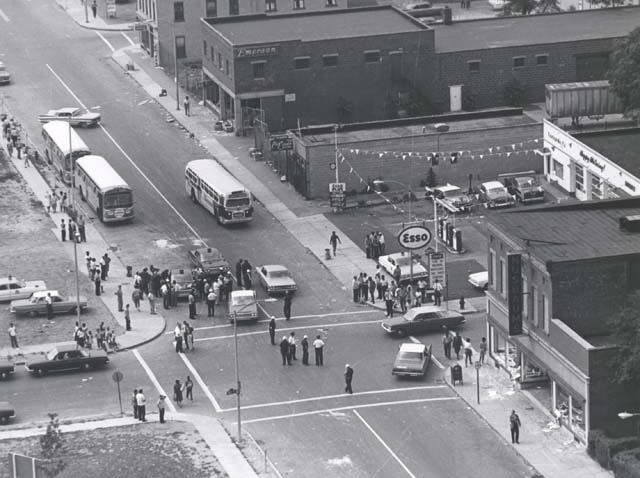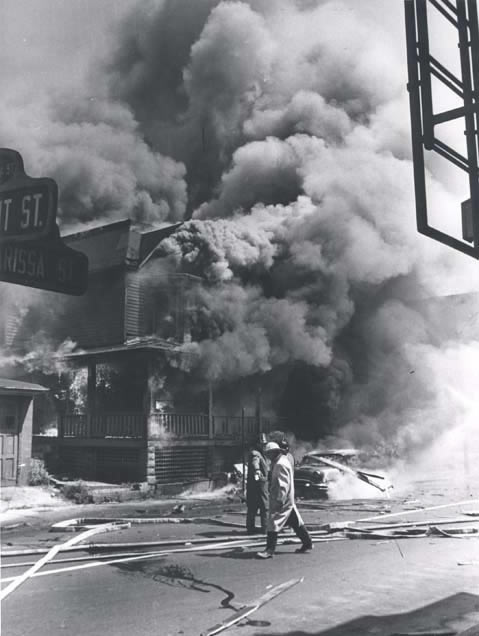
Race Riots
Abbott's active involvement in Rochester's Civil Defense continued into the
1960s. He was on duty when the city's race riots broke out on July 24, 1964.
Rochester became one of the first American cities to experience the 1960s tumult
of racial unrest when mob violence erupted after police arrested a young
African-American man participating in a street party near Joseph Avenue. Decades
of tensions about economic and social inequality spilled over as onlookers at
the arrest gathered into a crowd of angry protestors. For days, the city existed
in a state of emergency while throngs of peopled looted and vandalized parts of
the Third, Fifth, and Seventh Wards. The violence ceased by August 3, at which
point police and National Guard withdrew leaving a disquieted Rochester to
resume normal daily operations.
In addition to major property damage, the toll inflicted by the racial unrest
included human costs: five people were killed. Abbott was among the casualties.
Indeed, when the city approached its breaking point in the midst of the riots,
an alarmed Abbott took to the skies in a helicopter to survey the scenes. On
July 26, he asked several police officers to join him in taking an aerial view
of what was the most challenging moment in Rochester's racial history, but was
told all were needed on the ground. He and a pilot flew alone. While hovering
over the Third Ward at approximately 2:30 PM, a pilot error caused the
helicopter to crash into a house on Clarissa Street. The pilot and two men inside the
house died almost instantly. However, Abbott survived impact and a month-long
hospitalization at Strong before succumbing to severe burns on August 25, 1964.
A city mourned, grieving over what County Manager Gordon Howe called "a loss to
the community that cannot be measured."
 |
 |
 |
 |
| Images from the 1964 Race Riots. The final image shows the flame and wreckage from Abbott's Clarissa Street crash. |